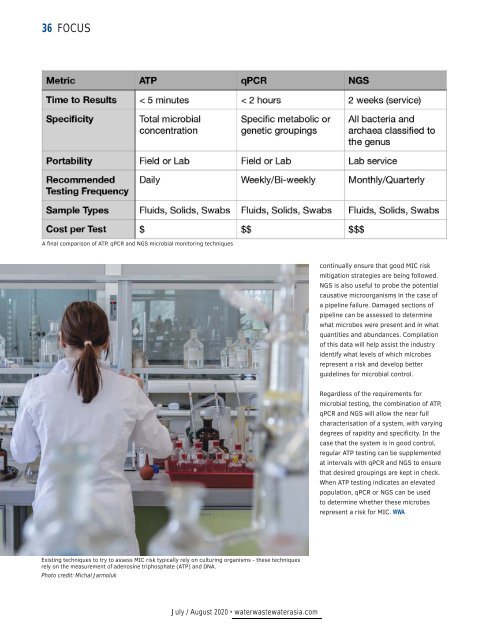Water & Wastewater Asia July/August 2020
Water & Wastewater Asia is an expert source of industry information, cementing its position as an indispensable tool for trade professionals in the water and wastewater industry. As the most reliable publication in the region, industry experts turn this premium journal for credible journalism and exclusive insight provided by fellow industry professionals. Water & Wastewater Asia incorporates the official newsletter of the Singapore Water Association (SWA).
Water & Wastewater Asia is an expert source of industry information, cementing its position as an indispensable tool for trade professionals in the water and wastewater industry. As the most reliable publication in the region, industry experts turn this premium journal for credible journalism and exclusive insight provided by fellow industry professionals. Water & Wastewater Asia incorporates the official newsletter of the Singapore Water Association (SWA).
- No tags were found...
Create successful ePaper yourself
Turn your PDF publications into a flip-book with our unique Google optimized e-Paper software.
36 FOCUS<br />
A final comparison of ATP, qPCR and NGS microbial monitoring techniques<br />
continually ensure that good MIC risk<br />
mitigation strategies are being followed.<br />
NGS is also useful to probe the potential<br />
causative microorganisms in the case of<br />
a pipeline failure. Damaged sections of<br />
pipeline can be assessed to determine<br />
what microbes were present and in what<br />
quantities and abundances. Compilation<br />
of this data will help assist the industry<br />
identify what levels of which microbes<br />
represent a risk and develop better<br />
guidelines for microbial control.<br />
Regardless of the requirements for<br />
microbial testing, the combination of ATP,<br />
qPCR and NGS will allow the near full<br />
characterisation of a system, with varying<br />
degrees of rapidity and specificity. In the<br />
case that the system is in good control,<br />
regular ATP testing can be supplemented<br />
at intervals with qPCR and NGS to ensure<br />
that desired groupings are kept in check.<br />
When ATP testing indicates an elevated<br />
population, qPCR or NGS can be used<br />
to determine whether these microbes<br />
represent a risk for MIC. WWA<br />
Existing techniques to try to assess MIC risk typically rely on culturing organisms - these techniques<br />
rely on the measurement of adenosine triphosphate (ATP) and DNA.<br />
Photo credit: Michal Jarmoluk<br />
<strong>July</strong> / <strong>August</strong> <strong>2020</strong> • waterwastewaterasia.com


















